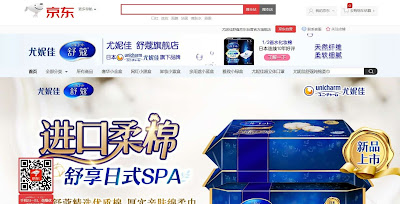Recently, the
Swedish oat-milk maker Oatly AB has sold a $200 million stake to a group led by private-equity
giant Blackstone Group Inc. that includes Oprah Winfrey, Natalie Portman,
former Starbucks Corp. chief Howard Schultz and the entertainment company
founded by Jay-Z. The move is a sign of growing interest in milk made with
plant alternatives.
What is Oatly?
Oatly is a
vegan food brand from Sweden which produces alternatives to dairy products from
oats. It was founded in 1990 using research from Lund University and today,
Oatly is Scandinavia’s leading brand of plant-based products.
Oatly
entered the US market four years ago and the product proved so popular it
created shortages. Oatly announced its first factory in the US in 2018 and
plans to open a second this year, part of a wider effort to add plants close to
its customers. The firm's products are available at 50,000 locations across 20
countries.
In
addition, in 2016, it formed a Joint Venture with China Resources Corporation
(CRC) which is a Chinese state-owned conglomerate that owns a variety of
businesses in Hong Kong and Mainland China. In early 2018, Oatly started its
operations in China and its APAC HQ is in Shanghai. It has since opened an
office in Shanghai and deployed a new Chinese character for “vegan milk” to
attract more milk drinkers to its products. Oatly is now sold in supermarkets,
as well as Starbucks and Pacific coffee shops.
Reasons of Oatly partnerships
Prior Oatly
investors include Belgium-based Verlinvest and China Resources, a state-owned
company.
Then Oatly
chose to partner with Blackstone Group because of their enormous resources and
unique reach.
The $200m
investment announced on represents about a 10% stake Oatly, putting the firm's
value at about $2bn. The commitment of its new partners in supporting us and
promoting our mission is a clear indication of where the world is going, which
is in a new, more sustainable direction.
Indeed,
Oprah's recent investment in Oatly aligns with her interest in helping the
environment. She is only the newest star to invest in plant-based food
companies. Snoop Dogg is an investor in Beyond Meat, as well as Leonardo
DiCaprio and others.
Growth of Oatly products demand in US and China
Plant-based
milk, specifically oat milk, continues to increase in popularity. Oatly is one
of the closest tasting plant milks to the real thing and consumers have adopted
it because of this close semblance to dairy.
Oatly sales
doubled in 2019, growing from $100 to $200 million in less than a year, as more
plant-based consumers expanded their tastes beyond soy, almond, and coconut
milks. Therefore, sales of oat milk are expected to increase rapidly in coming
years, also due to an increased dairy allergies and concerns about dairy's
environmental impact which push shoppers to look for alternatives.
In US about
41% of households purchased vegan milk last year. In addition, Oatly has
expanded its products from milk, to ice cream and yogurt and is seeing great growth
in China.
This
successful fundraising round will allow Oatly to further extend its supply
network to Europe, the United States and China.
Oatly's efforts for eco-sustainability
Oat milk is
full of protein and has a low impact on the environment, and Oatly is known as
one of the most environmentally-conscious companies.
Oatly is
hoping to inspire others in the industry to follow its sustainable lead. In
recent months, the company has made significant changes to its business model
to help fight climate change.
As stars
continue to invest in the plant industry, more consumers will become aware of
the positive impact that plant-based foods have on human health, the
environment and farm animals.
What will Oatly's future look like?
The company faces increased competition, as firms such as PepsiCo's Quaker Oats
and dairy giant HP Hood launch their own brands.
New milk
alternatives, made from products like peas, have also gained in popularity
among consumers. In the US, dairy companies, which have lost ground to the
alternatives, have also attacked plant-based rivals over the sector's
nutritional claims.
Therefore, despite
its success today, what will Oatly's future be?
If it
continues to have such innovative marketing strategies and adapt to local
markets and local demand, it will certainly have no problems.
To know the
reasons of Oatly’s success, read the following article:











